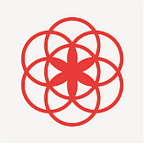In a poolside interview last year, Olympic Bronze medal swimmer Fu Yuanhui discussed her period as a factor affecting her performance at the Olympic games. She’s one of several athletes who have begun to speak publicly about how their menstrual cycle affects athletic performance.
Scientific studies are also exploring how fluctuations of hormones across the menstrual cycle can lead to different outcomes in training.
I’ve always had a passion for sports, competing in swimming competitions when I was younger. These days, I compete in events like mud races and local CrossFit competitions. I also work on designing the Clue app. Here are some tips for athletes to optimize your strength training, with your cycle in mind.
1. Don’t skip strength training in the first part of your cycle.
Several studies have looked at differences in responses to strength training in the follicular phase (the time from your period until ovulation), versus training in the luteal phase (from ovulation until your period).
Some research has found that strength training during the follicular phase resulted in higher increases in muscle strength compared to training in the luteal phase (1–3).
If you start paying attention to your cycle phases, you may find your strength training pays off the most in your follicular phase.
In plain English: I NEVER skip leg day before I ovulate!
2. Watch out for tendon injuries in the fertile window.
A startling statistic for people playing sports is that women are 3 to 6 times more likely than men to have injuries to the anterior cruciate ligament (ACL) (4).
A recent meta-review of studies looked at how hormonal changes may impact tendon laxity and risk of tendon injury. It found the risk was highest in the days leading up to ovulation, when estrogen is high. The luteal phase was associated with the lowest risk (4). More research is needed, but it’s worth doing longer warm-up exercises and not overstretching during your fertile window.
Personally, whenever I feel discomfort in my joints while doing heavy squat exercises, I track “knee pain” in Clue as a tag. My goal is to see whether there is a correlation between the ovulatory phase and knee pain.
3. Don’t beat yourself up in the second part of your cycle.
In the second part of your cycle, progesterone rises significantly. Your body temperature is also higher during this phase — body temp shoots up by at least 0.4 degrees celsius after ovulation and stays high until menstruation. Your body is preparing for a potential pregnancy, should an egg have been fertilized at ovulation.
As a result, you may find that you don’t have as much endurance during your luteal phase. You may not be able to hit max lifts, and may feel worse in training compared to the first part of your cycle.
So, don’t judge the results of your training based on your performance in this phase alone. Decreased performance is a perfectly normal experience in the luteal phase of your cycle.
For me, training sessions feel much more challenging in this period. To give an example from a few weeks ago: I was trying to do 3x3 front squats at 90 percent of my 1 rep max, yet I could barely eke out the reps at 85 percent. I was wondering how I ever lifted at 90 percent!
4. Take rest days in the second part of your cycle.
Based on the info above, you might want to schedule your rest days during your luteal phase. That doesn’t mean you should entirely skip training in this phase, as you’ll still improve from strength training in the luteal phase. If you’re not sure exactly when you’re ovulating, or you want a baseline for how long your average luteal phase tends to be, try taking ovulation tests for a few cycles (ovulation can shift cycle-to-cycle, but it’s usually your follicular phase that’s getting shorter or longer).
Also, if you want to take time off from training for vacation, your luteal phase is a great time to take it in order to reduce impact on your strength goals.
How to track your physical activities with Clue:
- You can connect wearables such as Fitbit or the ŌURA ring with Clue.
- Try to understand when your ovulation is happening, either with ovulation tests, or by tracking changes in fluids or body temperature. Knowing accurately where you are in your cycle will help you understand how you feel on each training day.
- Use complementary tags such as “knee pain”, “PR” when you hit a new max or “soreness” when your muscles are particularly stiff.
- Use Clue Connect to follow the cycles of your training partners so you can cheer each other up when things don’t go as planned and encourage each other to push harder on good days.
References
- Sung E, Han A, Hinrichs T, Vorgerd M, Manchado C, Platen P. Effects of follicular versus luteal phase-based strength training in young women. Springerplus. 2014 Dec 1;3(1):668.
- Wikström-Frisén L, Boraxbekk CJ, Henriksson-Larsén K. Effects on power, strength and lean body mass of menstrual/oral contraceptive cycle based resistance training. Journal of Sports Medicine and Physical Fitness. 2015.
- Reis E, Frick U, Schmidtbleicher D. Frequency variations of strength training sessions triggered by the phases of the menstrual cycle. International journal of sports medicine. 1995 Nov;16(08):545–50.
- Herzberg SD, Motu’apuaka ML, Lambert W, Fu R, Brady J, Guise JM. The effect of menstrual cycle and contraceptives on ACL injuries and laxity: a systematic review and meta-analysis. Orthopaedic journal of sports medicine. 2017 Jul 19;5(7):2325967117718781.
